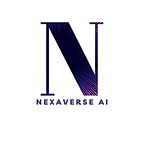Introducing Sora: OpenAI’s Leap into Video Generation
In the ever-evolving landscape of artificial intelligence, OpenAI’s Sora emerges as a groundbreaking video generation model that redefines the boundaries of AI’s creative and technical capabilities. This detailed exploration delves into the intricacies of Sora, showcasing its ability to transform textual prompts into detailed, lifelike videos, thereby opening new horizons for creators, storytellers, and technologists alike.
A Glimpse into Sora’s World
Sora is not just any video generation model; it’s a testament to the advanced capabilities of AI in understanding and interpreting human language to create compelling visual narratives. From generating complex scenes with multiple characters and specific types of motion to ensuring the accurate representation of details in the subject and background, Sora exemplifies the pinnacle of AI-driven creativity. Its deep understanding of language allows it to accurately follow user prompts, thereby crafting videos that are not only visually stunning but also emotionally resonant.
The Technical Marvel Behind Sora
At its core, Sora leverages a sophisticated video compression network that transforms raw video into a compressed latent space. This ingenious approach enables Sora to handle an extensive array of visual data, including videos and images of varying resolutions, durations, and aspect ratios. By converting these into spacetime patches — akin to transformer tokens — Sora is trained on a diverse set of visual inputs, allowing it unparalleled flexibility and creativity in video generation.
Pioneering Video Compression and Generation
Sora’s innovation extends to its use of a diffusion transformer architecture, which significantly enhances its video generation capabilities. This architecture not only scales effectively but also improves the quality of generated samples as the computational power increases. The result is a model capable of producing videos that are not just visually appealing but also rich in detail and depth.
Unmatched Versatility and Quality
One of Sora’s standout features is its sampling flexibility, which caters to the production of content in both widescreen and vertical formats, tailored to various devices’ native aspect ratios. This flexibility, combined with the model’s ability to train on videos in their native size, significantly enhances framing and composition, leading to outputs that are visually coherent and engaging. Furthermore, Sora’s application of a re-captioning technique, akin to that introduced in DALL·E 3, enriches its text fidelity and overall video quality, enabling the generation of high-quality videos that precisely align with user prompts.
Envisioning the Future with Sora
OpenAI’s Sora represents more than just an advancement in video generation technology; it heralds a new era of AI-enabled creativity and innovation. By seamlessly blending advanced language understanding with technical prowess, Sora offers creators and technologists a powerful tool to explore new forms of storytelling and content creation. As we stand on the brink of this new horizon, the possibilities with Sora seem limitless, promising a future where AI-generated videos can captivate, inspire, and innovate in ways we are only beginning to imagine.
How to Access Sora
Sora is currently accessible only to “red team” researchers, who are tasked with identifying potential issues with the model. These experts generate content containing identified risks to help OpenAI mitigate problems before Sora’s public release, expected sometime in 2024.
What Are the Alternatives to Sora?
High-profile alternatives to Sora include:
Runway-Gen-2: Similar to Sora, this text-to-video generative AI is available on web and mobile platforms.
Lumiere: Google’s recent announcement, currently accessible as an extension to the PyTorch deep-learning Python framework.
Make-a-Video: Introduced by Meta in 2022, available via a PyTorch extension.
Smaller competitors include:
Pictory: Simplifies text-to-video conversion, catering to content marketers and educators.
Kapwing: Offers an online platform for easy video creation, especially tailored for social media marketers and casual creators.
Synthesia: Specializes in AI-powered video presentations with customizable avatars, targeting business and educational needs.
HeyGen: Simplifies video production for various purposes such as marketing, sales outreach, and education.
Steve AI: Provides a platform for generating videos and animations from different prompts, scripts, and audio.
Elai: Focuses on e-learning and corporate training, seamlessly transforming instructional content into informative videos.
Sora (or similar tools) has the potential to become integral in various industries:
Enhanced content creation: Sora may expedite production processes in fields like VR, AR, video games, and traditional entertainment such as TV and movies. Even if not directly utilized in media creation, it could aid in prototyping and storyboarding concepts.
Tailored entertainment: There’s potential for Sora to generate and curate content personalized for individual users. This could lead to interactive and responsive media tailored to users’ unique tastes and preferences.
Personalized education: The highly individualized content produced by Sora could be beneficial in the education sector, facilitating tailored learning experiences that cater to students’ specific needs.
Real-time video adaptation: Sora could enable real-time editing or adaptation of video content to suit diverse audiences. This includes adjusting tone, complexity, or narrative elements based on viewer preferences or feedback.
Sora is not just a step forward in AI technology; it’s a leap into the future of video generation, where the lines between artificial creativity and human imagination continue to blur, creating a canvas that is as boundless as it is breathtaking.
